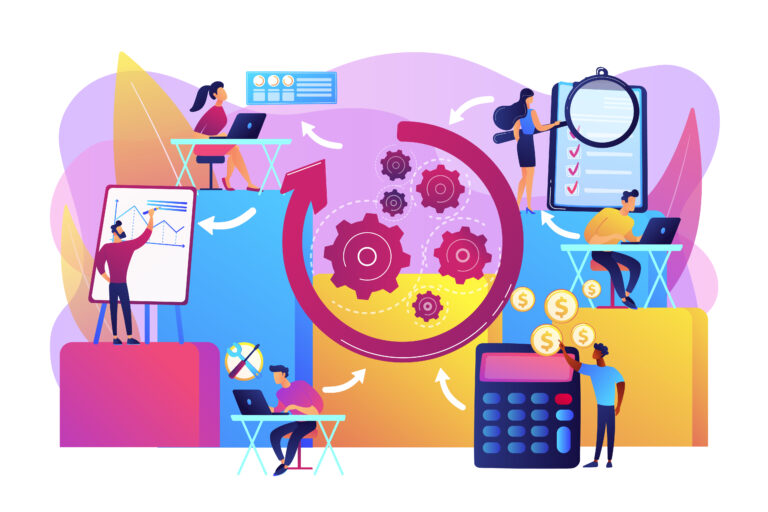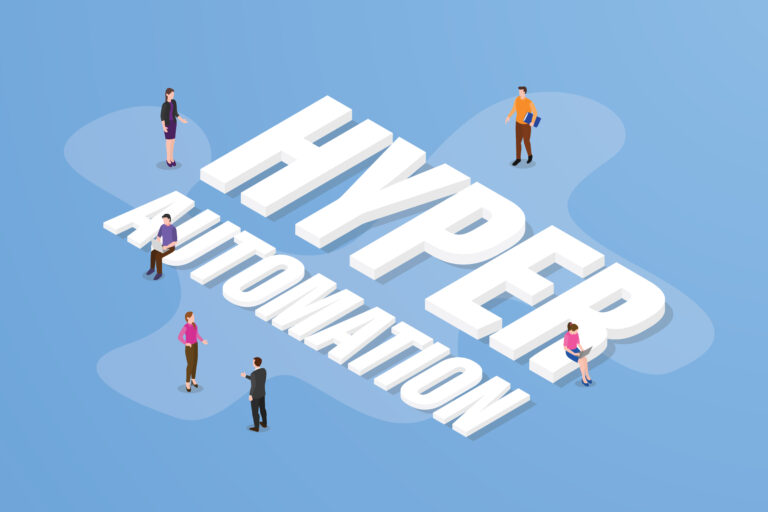The benefits of automation for colleges and universities—efficiency, cost-savings, and a winning student journey—have stirred an uptick in higher ed’s appetite for automated tech. Administrators are on an endless hunt for fresh automation opportunities, driving a targeted mindset shift known as hyperautomation.
Hyperautomation, also known as intelligent automation or intelligent processing automation (IPA), goes beyond simply fixing repetitive manual processes. Instead, hyperautomation is the conscious, large-scale infusion of automation technology into every step underpinning campus operations. Here are seven technologies driving this shift:
- Intelligent Document Processing (IDP)
- Robotic Process Automation (RPA)
- Business Process Management (BPM) Platforms with Automation Workflows
- Integration Platforms (iPaaS)
- Artificial Intelligence and Machine Learning
- Process Mapping Tools
- No/Low-Code Platforms
Whether it’s extracting numbers from financial aid requests or classroom cameras that gauge whether students are elated or exhausted by coursework, hyperautomation helps universities process more data and leverage it in compelling new ways. Hyperautomation can free up educators from toilsome admin paperwork and inject the admissions process with insight that a team of humans would never have the capacity to collect.
At its heart, hyperautomation helps schools better use data to build new opportunities that empower faculty and energize the student experience.
7 Hyperautomation technologies used in higher education
Antiquated systems create invisible walls between departments. When admissions platforms can’t communicate with financial aid software, this piles on the busywork for humans, who need to serve as the connection between the two. Staffers take on tasks like copy-and-pasting data between two software applications, handing forms back and forth for signatures, or manually triggering actions like permitting class enrollment once a student pays tuition.
Hyperautomation reduces the heavy administrative load by quashing the need for a human bridge between systems and allows technologies to interact with one another freely.
Let’s explore some of the top hyperautomation technologies supporting the sweeping changes in how universities are run.
Intelligent Document Processing (IDP)
Intelligent document processing empowers software to analyze and organize unstructured content. This type of content doesn’t follow a precise template like structured documents do. An example of structured content is an application form that always contains a student’s birthdate in the same reliable field, in the format 01/31/2003. That’s not the case in an email. A student’s birthdate might be buried somewhere in a tangle of sentences, written out as January 31, 2003. IDP helps computers understand information that exists more loosely.
Universities use IDP to “read” unstructured content like emails, images, PDFs, and scanned documents. Software can use the data to populate spreadsheets, validate inputs, fill out templates, or make snap decisions in areas like:
- Reviewing student transcripts
- Qualifying GPAs for athletic standing
- Assessing admissions requirements
- Invoicing
- Expense reporting
Robotic Process Automation (RPA)
Robotic Process Automation (RPA) is a master rule-follower. It can churn through structured data and follow a set of rules on how to handle it.
Increased competition amongst incoming students has pressured universities to raise standards, resulting in more incoming data points per student. RPA can pull out application data like GPA, test scores, and extracurricular activities to help faculty in decision-making. For some higher education institutions, the only limit to the number of applications they can accept is the number of staffers they have on hand to review them. Ernst & Young estimates that by using RPA in admissions, colleges and universities can support a 250% increase in application volume. Where else will you find RPA in higher ed?
- Autonomously filing applications and attachments
- Evaluating financial aid requests
- Scheduling course loads
- Determining whether graduation requirements are met
Business Process Management (BPM)
Colleges are ripe with paper-based, manual processes. One report revealed that higher education faculty spend 30% of their time on busywork unrelated to the student experience. Mundane tasks aren’t only a pain to work through; they also limit the time administrators have to focus on student needs.
Automated workflows disentangle faculty from these time-draining tasks, and arrange them in a sequence of tasks performed by digital workers. Forms no longer languish in the to-do folder on someone’s desk but exist digitally so they’re fully trackable throughout their entire approval journey. Top universities are using ProcessMaker for workflow automation to help manage processes like:
- Staff development
- Financial aid requests
- Alumni fundraising
- Registering for classes
- Marketing to prospective students
- Evaluating add/drop requests
Integration Platforms
iPaaS is a suite of technologies that link up various tools not produced by the same vendors: like a CRM, fundraising tools, or financial services. Just like a translator helps two people who speak different languages communicate, iPaaS providers help connect disjointed systems so they can share data and perform coordinated actions. For example, an app prospective students can use to schedule alumni interviews, using iPaaS, can connect with a new platform that adds post-meeting notes to an application and helps weigh the results.
Artificial Intelligence and Machine Learning (ML)
These two tools can help educators make decisions faster and consider information that would be too taxing for humans to evaluate. The Wall Street Journal highlights one department burgeoning with opportunities for artificial intelligence: admissions. Using AI, universities can examine data points that exist outside of an application. Software can evaluate a variety of factors to weigh a student’s genuine interest in attending that school.
For example, AI tools can calculate how many times a prospective student clicks on email links, how quickly they respond to an in-person interview invite, or if they RSVPed to a mixer but failed to attend. AI models can infuse the application process with these more nuanced behaviors to measure how likely a student is to enroll.
AI models can also present students with suggested course schedules and recommend suitable majors. Some colleges use AI to predict which students might drop out and why, so administrators can step in with corrective measures like counseling or additional financial aid.
Process Mapping Tools
Understanding how data flows throughout your university is one of the cornerstones of an effective hyperautomation strategy. Process mapping tools help faculty understand the route information takes to make its way from point A to point B, so they can build more effective workflows free of redundancies and bottlenecks.
No/Low-Code Platforms
In the past, putting together a lively marketing email used to require a knack for HTML coding. Now, you can use no and low-code platforms to drag and drop images, videos, and text blocks with a few clicks. The concept is now a key part of more complex applications, reducing the need for programming languages like Java and PHP. You can stack software actions like blocks to build your own payment workflows and approval chains without advanced coding experience.
- Vaccination status
- Collect assignments remotely
- Deploy chatbots
- Equipment or study room reservation tools
- Authorize WiFi access
Hyperautomation is here to stay
Hyperautomation, or intelligent process automation, is the next evolution of automation. The mindset shift encourages higher education faculty to become diligent scouts, constantly searching for ways automation can improve internal processes and revitalize the student journey.





